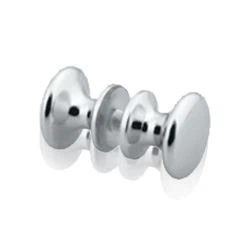As a seasoned supplier of marine parts, I understand the critical importance of winterizing your equipment to ensure its longevity and optimal performance. Winter can be harsh on marine parts, with freezing temperatures, snow, and ice posing significant threats. In this blog post, I'll share some comprehensive tips on how to winterize various marine parts, drawing from my years of experience in the industry.


Understanding the Need for Winterization
Before delving into the specific steps, it's essential to grasp why winterization is so crucial. When water freezes, it expands, which can cause severe damage to pipes, engines, and other components. Additionally, cold temperatures can lead to corrosion, rubber and plastic parts becoming brittle, and lubricants thickening, all of which can compromise the functionality of your marine equipment.
Engine Winterization
The engine is the heart of your vessel, and proper winterization is paramount. Here's a step-by-step guide:
- Flush the Cooling System: Start by flushing the engine's cooling system with a freshwater solution to remove any salt, sand, or debris. This helps prevent corrosion and blockages. Use a flushing muffs or a dedicated flushing kit, following the manufacturer's instructions carefully.
- Change the Oil and Filter: Fresh oil provides better lubrication and protection against corrosion. Drain the old oil and replace the filter. This is also a good time to check the oil level and top it up if necessary.
- Add Antifreeze: Pour a high-quality antifreeze into the cooling system to prevent freezing. Make sure to use the correct type and concentration of antifreeze recommended by the engine manufacturer.
- Stabilize the Fuel: Add a fuel stabilizer to the fuel tank to prevent the fuel from deteriorating over the winter. This helps keep the fuel system clean and prevents carburetor or injector clogging.
- Run the Engine: Start the engine and let it run for a few minutes to circulate the antifreeze and fuel stabilizer throughout the system. This ensures that all components are properly protected.
Plumbing System Winterization
The plumbing system on your boat is also vulnerable to freezing. Here's how to winterize it:
- Drain the Water Tanks: Empty all water tanks, including fresh water, gray water, and black water tanks. This prevents water from freezing and expanding, which can crack the tanks or pipes.
- Blow Out the Pipes: Use an air compressor to blow out the water from the plumbing pipes. Start from the highest point in the system and work your way down to ensure all water is removed.
- Add Antifreeze to the Traps: Pour a small amount of non-toxic antifreeze into the sink, toilet, and shower traps to prevent water from freezing and forming ice dams.
- Seal the Plumbing System: Close all valves and faucets to prevent air from entering the system and causing condensation.
Electrical System Winterization
The electrical system on your boat can also be affected by winter conditions. Here are some tips to protect it:
- Disconnect the Batteries: Remove the batteries from the boat and store them in a cool, dry place. Charge the batteries fully before storing them and check the electrolyte levels regularly.
- Inspect the Wiring: Check the wiring for any signs of damage or corrosion. Repair or replace any damaged wires to prevent electrical shorts or fires.
- Cover the Electrical Components: Use waterproof covers to protect the electrical components, such as the battery charger, alternator, and control panels, from moisture and snow.
Other Marine Parts Winterization
In addition to the engine, plumbing, and electrical systems, there are other marine parts that need to be winterized. Here are some examples:
- Plastic Rod Holder: Clean the rod holders thoroughly and remove any dirt, debris, or fishing line. Apply a protective coating to prevent corrosion and damage from the elements.
- Swivel Hasp: Lubricate the swivel hasps with a high-quality marine lubricant to prevent rust and ensure smooth operation.
- Plastic Rod Holder: If you have a plastic rod holder, store it in a dry place to prevent cracking or warping due to cold temperatures.
Storage Considerations
Once you've winterized your marine parts, it's important to store them properly to protect them from the elements. Here are some storage tips:
- Choose a Suitable Location: Store your boat in a dry, covered area, such as a garage, shed, or boat storage facility. This protects it from snow, ice, and UV rays.
- Use a Boat Cover: Cover your boat with a high-quality boat cover to protect it from dust, dirt, and moisture. Make sure the cover fits properly and is secured tightly.
- Elevate the Boat: If possible, elevate the boat off the ground to prevent water from pooling underneath and causing damage.
- Check on the Boat Regularly: During the winter, check on your boat regularly to make sure everything is in good condition. Look for signs of damage, such as leaks, cracks, or corrosion, and address them promptly.
Conclusion
Winterizing your marine parts is an essential part of boat maintenance. By following these tips, you can protect your investment and ensure that your boat is ready to go when the boating season returns. As a Marine Parts supplier, I'm here to help you with all your winterization needs. Whether you need engine parts, plumbing supplies, or electrical components, I have a wide range of high-quality products to meet your requirements. If you have any questions or need further advice on winterizing your marine parts, please don't hesitate to contact me. I'm always happy to assist you. Let's work together to keep your boat in top condition all year round.
References
- American Boat and Yacht Council (ABYC) Standards and Technical Information Reports
- Boat Owners Association of The United States (BOATUS) Marine Maintenance Guide
- Manufacturer's manuals and specifications for your marine equipment



